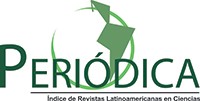Comparison of two staining methods for the detection of nucleolar organizing regions (NOR) of acrocentric chromosomes
DOI:
https://doi.org/10.24039/rtb20232111533Keywords:
cytogenetics , heteromorphisms , NOR , satellitesAbstract
This study aimed to compare two staining methods for detecting nucleolar organizing regions (NOR) of acrocentric chromosomes in the Cytogenetics Laboratory of INMP (“Instituto Nacional Materno Perinatal”), Lima, Peru. A total of 60 metaphases with normal karyotypes were analyzed, of which 30 were stained for each method: Kodama et al. and Howell & Black, respectively. The recognition efficiency and staining intensity of these regions were evaluated by each technique based on the count of NORs Ag (+); Likewise, the staining and integrity of the chromosomes were evaluated and the differences between these two methods were established. No significant differences were found regarding the number of stained regions with both techniques; however, in staining intensity and chromosomal quality, the Howell & Black method was superior. It is concluded that the Howell & Black method generates better results for the cytogenetic analysis of these regions.
Downloads
References
Akbaş, H., İsi, H., Oral, D., Türkyılmaz, A., Kalkanlı-Taş, S., & Şimşek, S. (2012). Heteromorphisms are more frequent in couples with recurrent abortion. Genetics and Molecular Research, 11, 3847-3851.
Bloom, S., & Goodpasture, C. (1976). An Improved Technique for Selective Silver Staining of Nucleolar Organizer Regions in Human Chromosomes. Human Genetics, 34, 199-206.
Cheng, R., Ma, Y., Nie, Y., Qiao, X., Yang, Z., Zeng, R., & Xu, L. (2017). Chromosomal polymorphisms are associated with female infertility and adverse reproductive outcomes after infertility treatment: a 7-year retrospective study. Reproductive biomedicine online, 35, 72-80.
Dai, R., Pan, Y., Fu, Y., Liu, Q., Han, W., & Liu, R. (2018). Role of male genetic factors in recurrent pregnancy loss in Northeast China. European Journal of Obstetrics & Gynecology and Reproductive Biology, 224, 6-11.
De la Fuente, B., Cerda, R., Dávila, M., García, C., De la Rosa, R., & Cortés, E. (2009). Chromosomal abnormalities and polymorphic variants in couples with repeated miscarriage in Mexico. Reproductive BioMedicine Online, 18, 543-548.
Derenzini, M., Farabegoli, F., & Trere, D. 1992. Relationship between interphase AgNOR distribution and nucleolar size in cancer cells. Histochemical Journal, 24, 951-956.
Derenzini, M., & Trere, D. (1991). Importance of interphase nucleolar organizer regions in tumour pathology. Virchows Archiv B, 61, 1-8.
Dong, Y., Jiang, Y., Du, R., Zhang, H., Li, L., & Liu, R. (2013). Impact of chromosomal heteromorphisms on reproductive failure and analysis of 38 heteromorphic pedigrees in Northeast China. Journal of Assisted Reproduction and Genetics, 2, 275-281.
Hernando, D.C. (2005). Caracterización de anomalías cromosómicas en diagnóstico prenatal y postnatal mediante técnicas de citogenética molecular (Tesis de Doctorado). Universidad Autónoma de Barcelona, España.
Howell, W., & Black, D. (1980). Controlled silver-staining of nucleolus organizer regions with a protective colloidal developer: a 1-step method. Experientia, 36, 1014-1015.
Kodama, Y., Yoshida, M., & Sasaki, M. (1980). An improved silver staining technique for nucleolus organizer regions by using nylon cloth. The Japanese Journal of Human Genetics, 25, 229-233.
McGowan-Jordan, J., Hastings, R., & Moore, S. (2020). Sistema Internacional de Nomenclatura Citogénica Humana, 1^era ed.
Madon, P., Athalye, A., & Par, F. (2005). Polymorphic variants on chromosomes probably play a significant role in infertility. Reproductive BioMedicine Online, 11, 726-732.
Radhakrishnan, Y., Chandra, N., & Gopinath, P. (2010). Satellite Associations in Down Syndrome. International Journal of Human Genetics, 10, 101-104.
Sotelo, J. (1982). Los Organizadores Nucleolares (NOR´s) en cromosomas metafásicos humanos, y su posible relación con los mecanismos de envejecimiento celular (Tesis de Maestría). Universidad Autónoma de Nuevo León, Monterrey.
Surech, V., Pramod, C., Seema, R., Sharan, S., Shankari, M., & Kumar, M. (2016). Karyotiping: Current perspectives in diagnosis of chromosomal disorders. Sifa Medica Journal, 3, 35-40.
van Sluis, M., Gailín, M. Ó., McCarter, J. G., Mangan, H., Grob, A., & McStay, B. (2019). Human NORs, comprising rDNA arrays and functionally conserved distal elements, are located within dynamic chromosomal regions. Genes & development, 33, 1688-1701.
Varley, J.M. (1977). Patterns of silver staining of human chromosomes. Chromosoma, 61, 207-214.
Zhu, J. J., Qi, H., Cai, L. R., Wen, X. H., Zeng, W., Tang, G. D., Tang, G.D., Luo, Y., Meng, R., Mao, X.Q., & Zhang, S. Q. (2019). C-banding and AgNOR-staining were still effective complementary methods to identify chromosomal heteromorphisms and some structural abnormalities in prenatal diagnosis. Molecular Cytogenetics, 12, 1-11.
Published
How to Cite
Issue
Section
License

This work is licensed under a Creative Commons Attribution-NonCommercial-NoDerivatives 4.0 International License.
Objeto: El AUTOR-CEDENTE transfiere de manera TOTAL Y SIN LIMITACIÓN alguna al CESIONARIO (Revista The Biologist (Lima)) los derechos patrimoniales que le corresponden sobre sus obras por el tiempo que establezca la ley internacional. En virtud de lo anterior, se entiende que el CESIONARIO adquiere el derecho de reproducción en todas sus modalidades, incluso para inclusión audiovisual; el derecho de transformación o adaptación, comunicación pública, traducción, distribución y, en general, cualquier tipo de explotación que de las obras se pueda realizar por cualquier medio conocido o por conocer en el territorio nacional o internacional.
Remuneración: La cesión de los derechos patrimoniales de autor que mediante este contrato se hace será a título gratuito.
Condiciones y legitimidad de los derechos: El AUTOR-CEDENTE garantiza que es propietario integral de los derechos de explotación de la(s) obra(s) y en consecuencia garantiza que puede contratar y transferir los derechos aquí cedidos sin ningún tipo de limitación por no tener ningún tipo de gravamen, limitación o disposición. En todo caso, responderá por cualquier reclamo que en materia de derecho de autor se pueda presentar, exonerando de cualquier responsabilidad al CESIONARIO.
Licencia de acceso abierto: El AUTOR-CEDENTE autoriza que manuscrito publicado en la Revista Científica The Biologist (Lima) (versión Impresa ISSN 1816-0719, versión en línea ISSN 1994-9073) permanece disponible para su consulta pública en el sitio web http://revistas.unfv.edu.pe/index.php/rtb/index y en los diferentes sistemas de indexación y bases de datos en las que la revista tiene visibilidad, bajo la licencia Creative Commons, en la modalidad Reconocimiento-No comercial- Sin Trabajos derivados –aprobada en Perú, y por lo tanto son de acceso abierto. De ahí que los autores dan, sin derecho a retribución económica, a la Escuela Profesional de Biología, Facultad de Ciencias Naturales y Matemática de la Universidad Nacional Federico Villarreal (EPB - FCCNM - UNFV), los derechos de autor para la edición y reproducción a través de diferentes medios de difusión.









































